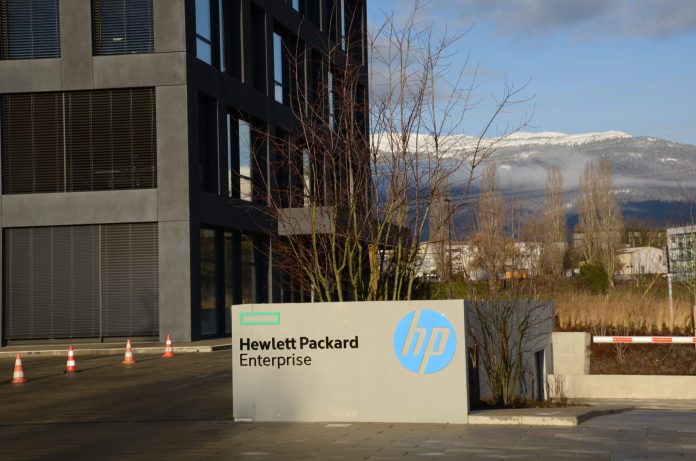Hewlett Packard Enterprise (HPE) has opened a new Industry 4.0 ‘innovation lab’ for industrial IoT and edge compute projects in Geneva, Switzerland. The company said the new facility will bring a sharper competitive edge to its ‘converged edge’ portfolio, and commercial gains to partners.
“The focus of IoT is to do things we have never done before, and to do things better. This is more than a showcase – it is where we ideate, create, test and deploy solutions,” said Tom Bradicich, vice president and general manager for servers, edge and IoT systems, ahead of the ribbon-cutting at the Geneva site on Friday (January 18).
The new Industry 4.0 facility will help customers “capitalise” on the spiralling amounts of data being generated outside of data centres by devices, machines, assets and sensors at the ‘coal-face’ of industrial operations, it said.
Phil Davis, chief sales officer at HPE, commented: “Data in itself is not valuable – it is what you do with it that matters. Data is the new currency, the oil of the modern era. Companies that can harness it and make informed decisions more quickly will win.”
HPE referenced statistics from Gartner, frequently quoted in the promotion of edge gear, that 75 per cent of enterprise data will be processed outside of data centres, and closer to their source, by 2020. The figure stands at around 10 per cent today.
The rate of disruption is quickening for enterprises; as priority, they should get to grips with varied edge architectures to support latency-sensitive applications, the company said. “We are seeing a pace of change within businesses that is unprecedented, where 50, 60 and 70 year-old business models are being disrupted,” commented Davis.
He took banking as an example. “Twenty-five years ago, it was about how many branches you had; 15 years ago, it was about how many ATMs. Today, it’s all about your mobile application.” He also referenced the digital upgrades of buildings, malls and stadiums, and the digital ‘experiences’ being spun out of them.
HPE’s work with arenas and stadiums in the UK and US – notably, Tottenham Hotspur’s new White Hart Lane football ground in London, and the 49ers’ Levi Stadium in San Francisco – was referenced in the presentations, and within the background narrative.
“We have never seen such a degree of technological change as now; there has never been a faster pace of innovation,” repeated Davis. “And while it is exciting, it presents lots of challenges for customers to manage their business and to understand the technology options available to them.”
The Geneva lab, HPE’s third IoT innovation lab, after sites in Houston and Singapore, is a collaborative space, it said, for customers to test IoT solutions and “discover the business value” of the technologies HPE and its partners have in play. These include edge hardware, artificial intelligence, wired and wireless networking, security, location services, and mixed reality.
The facility houses a number of ‘edge experience zones’, featuring practical IoT use cases for industries such as oil and gas, manufacturing, engineering, healthcare, retail, and smart cities. The company proclaimed its “commitment to innovation… and the Swiss market”.
“We do more than just technology and business. We are giving back to the community,” commented Bradicich, revealing also a new HPE startup programme, which will bring local innovators in touch with the innovation lab. The programme starts with 18 startups from the local areas.
“Sometimes we get a first mover advantage,” he remarked, in interview later. “And because all roads cannot lead to HPE.”
In the main presentation, leaders from the local authority commented on HPE’s support for local innovation.
Daniel Loeffler, secretary-general and minister for the economy for the Canton of Geneva, took time to talk up the city’s “unique ecosystem” – 1,000-odd multi-nationals, a high-profile researchers and industry types (CERN, the World Economic Forum, the ITU, et al), and favourable taxes and labour laws. The lake and mountains got a mention, too.
All of these elements are being impacted by new digital tech, he said. “Our business landscape is influenced by digital transformation and acceleration that enterprises are facing on daily basis.”
The new innovation centre will benefit SMEs, as much as large enterprises, Loeffler suggested. He called it “good news for economic dynamism”, and said it helped make Geneva “a central hub for innovation in Europe”.
In the opening address, Bradicich presented examples of where edge computing has delivered value and brought insights for three sectors: science, engineering, and business. The implication was HPE had a hand in each. He cited the application of edge functions at CERN, processing 40 terabytes of data per second, adjacent its Large Hadron Collider.
He also highlighted Rolls-Royce’s in-house processing of data from safety tests on its jet engines (“four times bigger than this room”), flinging solid particles into the turbines to mimic mid-flight disaster scenarios, and to re-tune its design and manufacturing accordingly.
For the business case, he offered up Chicago O’Hare airport, where underground scanners track luggage between check-in desks, planes, and baggage conveyors, and another case (“my favourite”), from Duke Energy, where sensors have attached to turbines gauge environmental conditions, predict failures, and link with market data to schedule cheap repairs.
In this context, Bradicich said of the new facility: “These are not only places to demonstrate or test solutions – they are places to provoke thinking about the possibilities, and then come together to build and deploy the next generation of IoT and intelligent edge solutions.”

